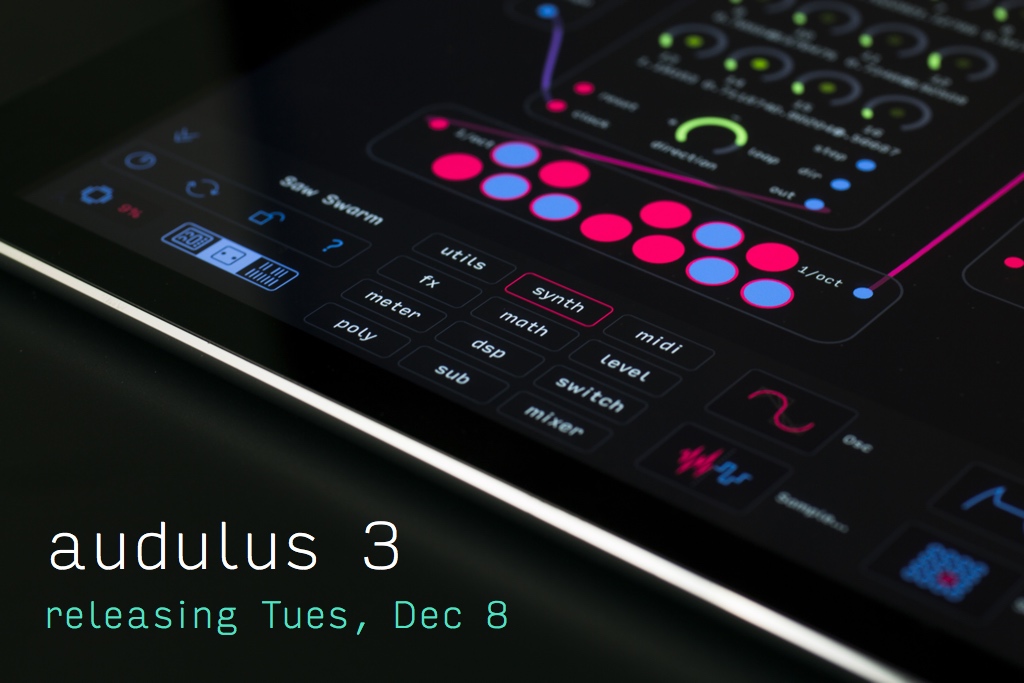
#Audulus sequencer download
To download StepSeq for free, visit the Novation support pages. This will be resolved in forthcoming updates.
#Audulus sequencer update
An additional probability function lets you set the likelihood that a note will be triggered, so you can add interesting variation to your sequences.Being a patch for Max For Live, StepSeq can be edited, so you can customise its features and use it as part of larger patches.Ībleton Live 8.1 and Max For Live are both required in order for Novation's StepSeq to operate.Currently, using StepSeq and Live's CS Step Sequencer (which is ideal for drum programming) simultaneously with Launchpad, results in conflicting LED update messages. The round buttons on the right-hand side of Launchpad are used to determine which parameters the grid of square buttons will affect, enabling you to alter the velocity, pitch, and length of notes, just like on an old-school groovebox but with a few extra tricks. Once inserted, StepSeq communicates directly with Launchpad, transforming its 'User 2' mode into the interface for a step sequencer, so you can programme patterns quickly and simply on the fly, while retaining control over Live from the same control surface. StepSeq is a MIDI effect that generates a sequence of notes, which can be used to play any instrument compatible with Ableton Live (including those from third-party developers). The degree of the scale and its tonal centre can be set by the user, meaning that, once set up, any note you trigger in your sequence willfit in harmonically with your track, making itreally easy to keep within the context of the song. One of the most used building modules is the Octave to Hz converter.Conceived as a cool but powerful sequencer to enable Launchpad users to program melodies, leads and basslines quickly in Live, the buttons are configureddiatonically (as opposed to chromatically, as with a traditional step sequencer).


The inputs and outputs of all Audulus modules are standardized into a 4 basic signals: audio, gate, modulation, and octave. To download and share user-created modules, join the Audulus community forum. Each signal and its indicator are outlined below. To use modules, you must first understand the 4 basic standardized signals in Audulus: audio, gate, modulation, and octave. Some modules are simple, like an attenuator, and some are more complex, like fully-voiced synthesizers. This is an overview of all of the modules in the Audulus module library.Īll Audulus modules are created using nodes.Įach module does a specific thing to create or modify signals.


 0 kommentar(er)
0 kommentar(er)
